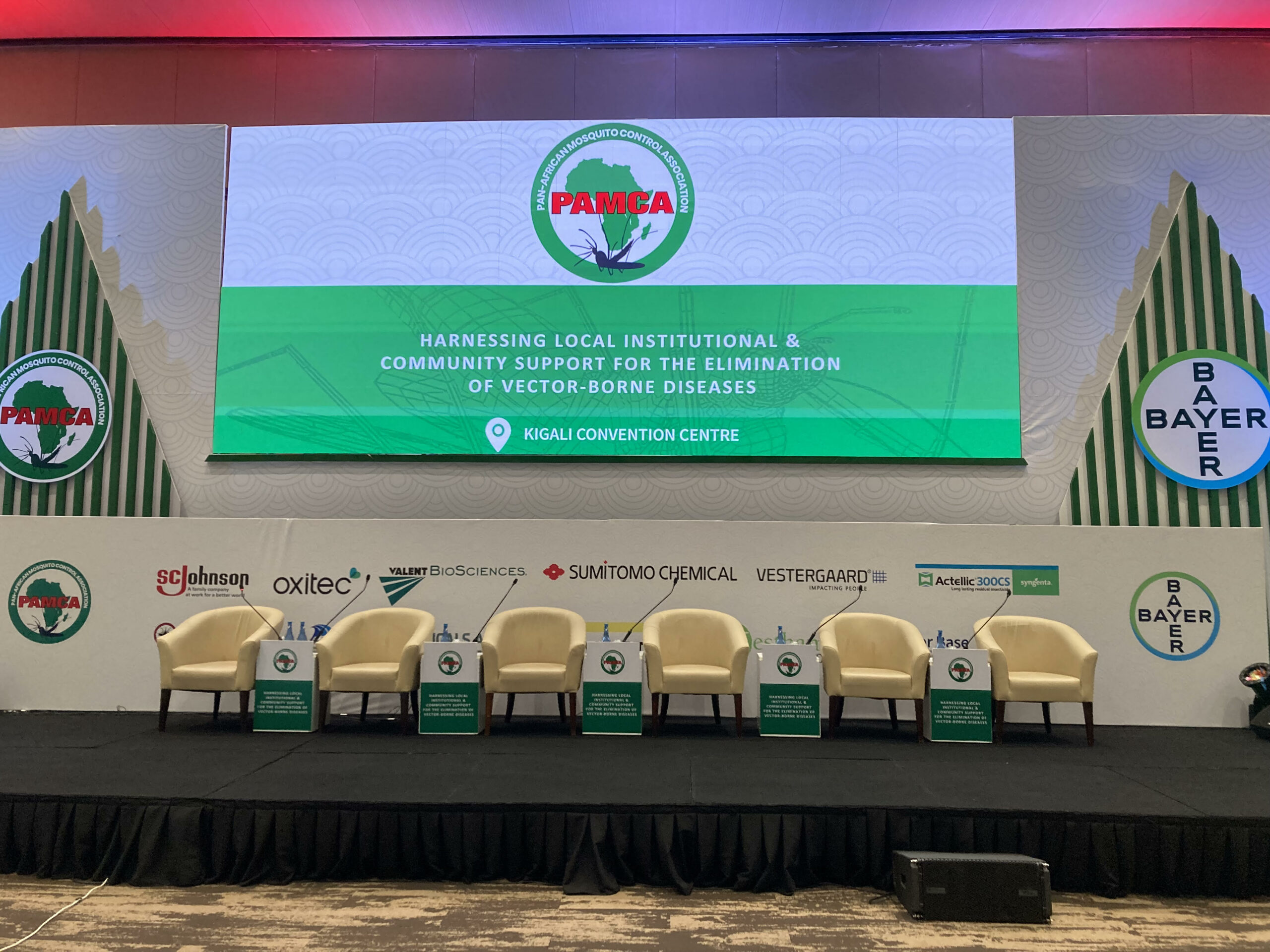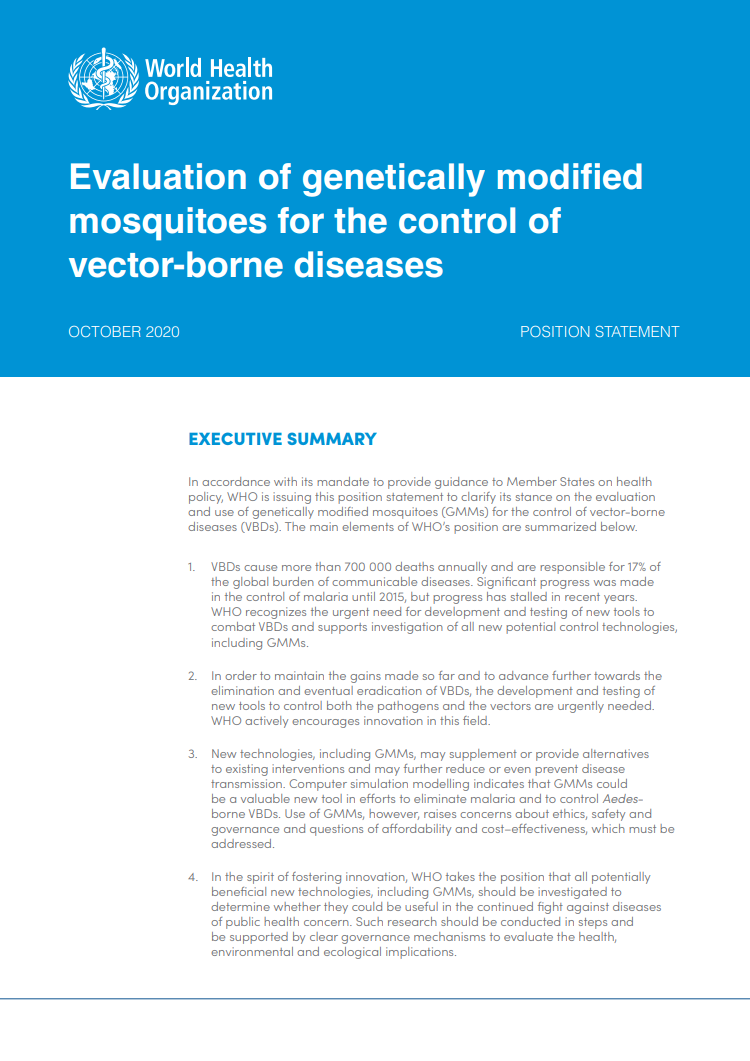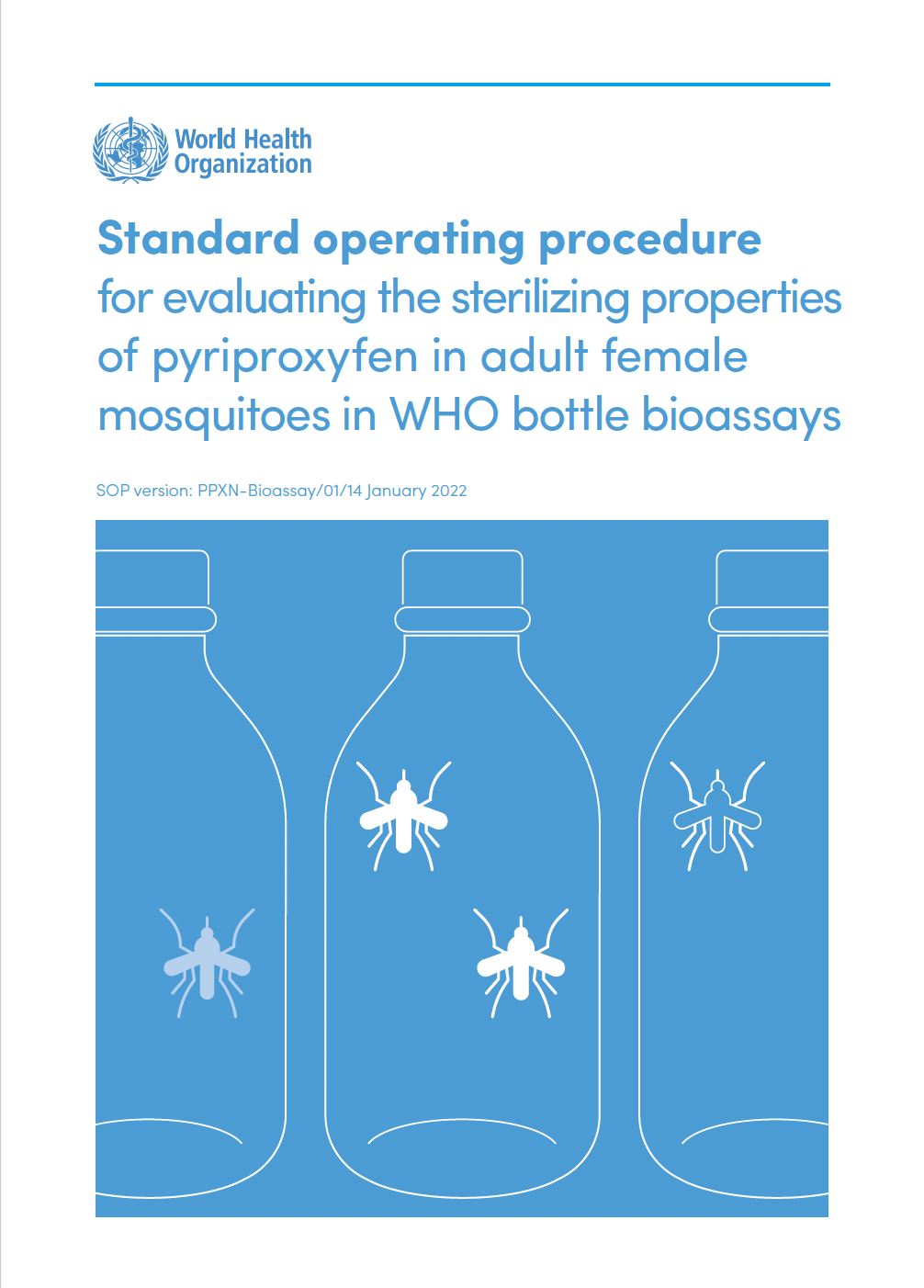8th PAMCA Annual Conference and Exhibition: Day 1
Monday, 26th September 2022
Published: 28/09/2022
This report is brought to you by the MESA Correspondents Lambert Nzungize, Eggrey Aisha Kambewa, Oyinkansola Suliat Fadiji, Jean Claude Ngirimana, Diane Leslie Nkahe, Mauro Pazmino Betancourth, Patricia Doumbe Belisse, Nathalie Amvongo Adjia, Otubea Owusu Akrofi, and Caroline Kiuru. Senior editorial support has been facilitated by Jessy Goupeyou-Youmsi and Idelphonse Bonaventure Ahogni.
THEMES: THEMES: Vector Control
MESA Correspondents bring you cutting-edge coverage from the 8th PAMCA Annual Conference and Exhibition “Harnessing local institutional and community support for the elimination of vector-borne diseases (VBDs)”
Day 1: Monday, 26th September 2022
8th PAMCA Annual Conference and Exhibition
The #PAMCA2022 Annual Conference & Exhibition is being held at the Kigali Convention Centre (KCC), Rwanda, between 26th – 28th September 2022. This year’s event marks the 8th annual edition and it is themed “Harnessing local institutional & community support for the elimination of Vector-Borne Diseases (VBDs)”.
Prior to the start of the 3-day conference, seven short trainings/meetings were held:
- A closed FNIH meeting was held on September 23rd, where participants (mostly decision-makers) have been trained to appreciate modelling and how models can be used to support the decision-making process.
- A Gene Drive Beta course held on September 23rd, targeted people with little knowledge and background about gene drive as preliminary to the standard Gene Drive course.
- A 3-day training course on gene drive (September 23rd – 25th), “Novel Genetic Vector Control strategies: From research to acceptance and implementation” took place to provide the basic technical understanding of gene drive technologies with the action plan to disseminate that knowledge in the participants’ home countries and institutions.
- A 3-day workshop specific for women-themed (September 23rd – 25th), “Effective communication in leadership and professional development course” to improve the leadership and communication skills of women in vector control (WIVC) in Africa. This workshop featured 25 women from 17 African countries.
- A 3-day professional development workshop (September 23rd – 25th) on Strengthening Vector Control Decision-Making in Africa, targeting researchers and professionals based in Africa who are interested in using modelling information to make informed decisions within public health.
- The Anopheles Genomics Hackathon workshop was held on September 25th, for trainees and trainers of the PAMCA-MalariaGEN training programme on data analysis for genomic surveillance of African malaria vectors was delivered virtually and that provided participants with a great opportunity to meet, interact, and network with each other.
- The Wekre Initiative workshop was held on September 25th, where National Malaria Control Programmes (NMCPs) from 16 countries met with three PAMCA centres of excellence (the Centre for Research in Infectious Diseases in Cameroon, Ifakara Health Institute in Tanzania and the Research Institute of Health Sciences – IRSS in Burkina Faso) to discuss the path forward for system-wide evidence-based decision-making for malaria elimination.
Opening Ceremony
The opening ceremony was moderated by Dr. Damaris Matoke-Muhia, Programme Manager for Capacity Building & Gender Mainstreaming at PAMCA, and Dr. Jessy Goupeyou-Youmsi, WIVC Regional Coordinator for West Africa at PAMCA, who co-MC the entire conference. Six hundred practitioners, researchers, program managers, policymakers, partners, and members of civil society from across Africa, Asia, Europe and America attended this year’s edition. The Executive Director of PAMCA, Dr. Prosper Chaki; the president of PAMCA, Prof. Charles Mbogo; the President of AMCA, Dr. Mark Breidenbaugh; the PAMCA-Rwanda president, Dr. Emmanuel Hakizimana; the Director General of KEMRI, Prof. Sam Kariuki, the interim CEO of the Roll Back Malaria, Dr. Corine Karema; the Bill & Melinda Gates Foundation representative, Dr. Seynudé J-F Dagnon, and the Rwanda Minister of Health, Dr. Daniel Ngamije, gave their opening remarks. The opening highlighted the participation of 16 National Malaria Control Programme (NMCP) representatives sponsored by PAMCA which marks the first time PAMCA integrates programs and researchers, in a context where malaria is increasing with a child dying every minute of malaria in Africa, a preventable and treatable disease. During the opening, the President of AMCA informed about the updated resources on “Best Practices for Integrated Mosquito Management”. It was also mentioned by the panel for the opening remarks that gender-skewed efforts are still needed to improve.
Keynote Speaker
The keynote address was given by Prof. Sheila Tlou (African Leaders Malaria Alliance – ALMA) from Botswana. She highlighted the work that has been done in reducing malaria in Africa and the problems faced. Indeed, there has been an increase in vector control interventions in Africa. However, due to challenges in the implementation of vector control, supply chain management, limited resources, limited capacity, and lack of accountability and mobilization, the gains have been minimal. She highlighted the importance of political and local community engagement, especially with women and the youth, and also setting systems to involve local stakeholders in joining forces in implementing vector control and taking ownership of vector control activities. Prof. Tlou also highlighted the need to advocate for malaria to remain a priority at a political level. She recognized the important work PAMCA plays in capacity building, and local and political mobilization.
Parallel Scientific Session 1: Vector surveillance, epidemiology, disease control programs and global health
Jonathan Karisa (KEMRI – Wellcome Trust, Kenya) introduced a novel use of the Matrix-Assigned Laser Desorption Ionization-Time of Flight (MALDI-TOF) technique for determining entomological parameters including vector species diversity, infection status, feeding behaviors, age grading and insecticide resistance level which overcomes the challenges of cost and throughput from current techniques. The efficiency and cost-effectiveness of MALDI-TOF over currently gold standard methods (microscopy, ELISA and PCR-based) was proven in the field, on the Kenyan coast, thus positioning MALDI-TOF as a potential tool to improve vector surveillance for species and blood meal identification.
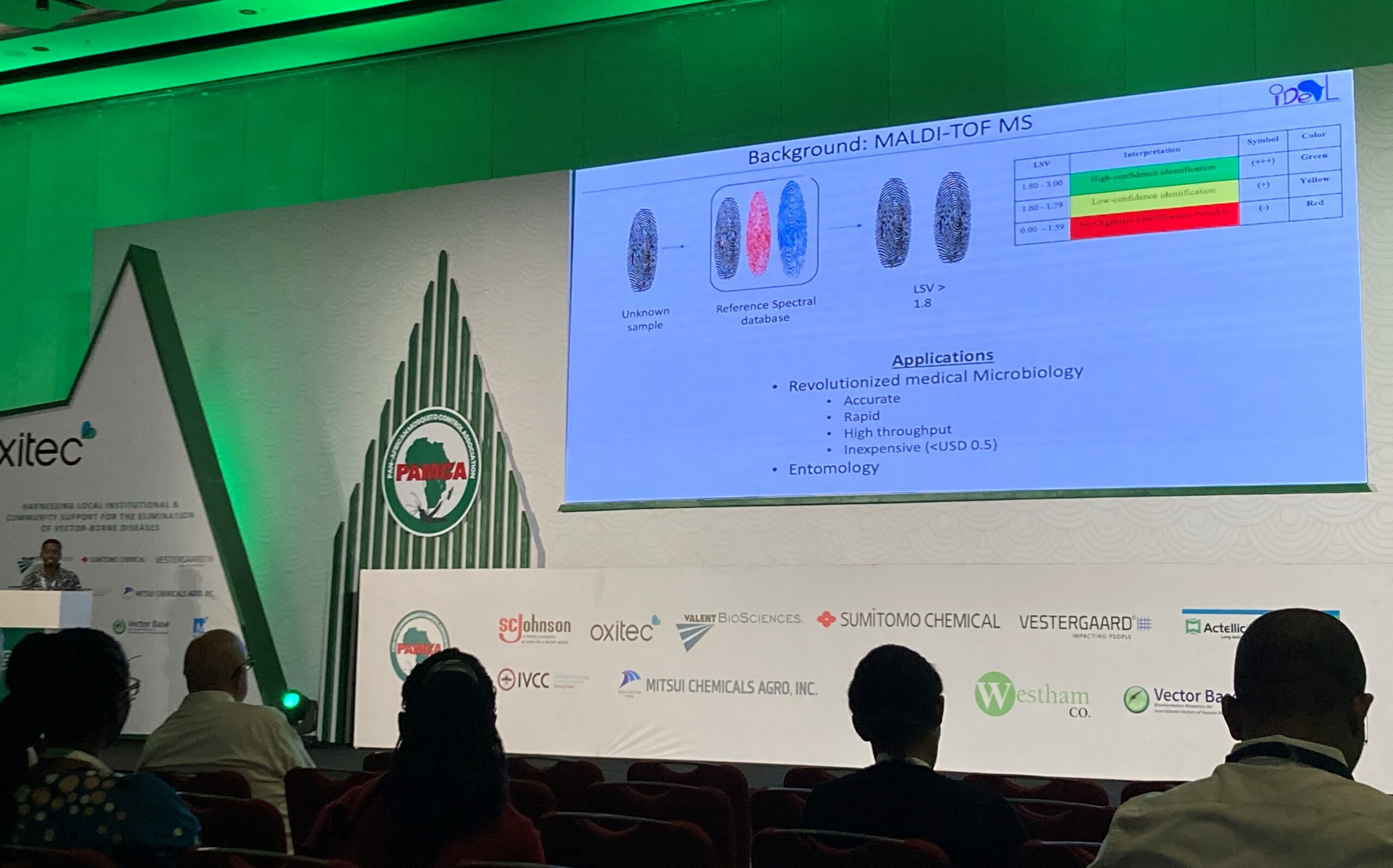
Yvonne Kamau (KEMRI – Wellcome Trust, Kenya) highlighted that there is no clear dose regimen recommended for ivermectin mass drug administration (MDA) for malaria control. The study evaluated two dose regimens: 300mcg/Kg (administered for 3 days) and 400mcg/Kg (administered once) for Killing An. gambiae mosquitoes. Venus blood and capillary samples were taken to analyze pharmacokinetics and pharmacodynamics (PK/PD). The study results showed that the killing effect lasted the same time for both regimens, with 400mcg/Kg administered once showing a slightly higher killing effect in An. gambiae.
Caroline Wanjiku Kung’u (KEMRI – Wellcome Trust, Kenya) recalled the limited utility of current conventional vector control tools, long-lasting insecticidal nets (LLINs) and indoor residual spraying (IRS), against outdoor mosquitoes which contribute to residual malaria transmission and questioned how to cover these gaps. To demonstrate the mosquitocidal effect of ivermectin, a mass drug administration (MDA) three-arm cluster randomised controlled trial was performed in Mopeia, Mozambique. Ivermectin was administrated to humans only, and to humans and livestock. In the control arm albendazole was administered to humans. Findings suggested that repeated administration of ivermectin to humans and livestock at the community level could result in a decrease in mosquito populations and malaria transmission.
Limonty Simubali (Johns Hopkins Bloomberg School of Public Health – JHSPH, USA) brought the focus on how understudied malaria vectors such as Anopheles rufipes, a primarily zoophilic species, could exacerbate malaria risk and supplement malaria transmission to humans. The study involved twenty-five clusters of 12 households each, along the transect from Mutama River to Kariba Dam in Southern Zambia, with mosquitoes being collected indoors and outdoors. Specimens of Anopheles rufipes caught from animal enclosures showed positivity with circumsporozoite protein (CSP) through ELISA. This raises the need for enhanced vector surveillance to understand the behaviour (feeding, resting, etc) of understudied vectors.
Parallel Scientific Session 2: Precision public health and innovations for VBD elimination: AI, entomological databases, modelling and genomic surveillance
Halfan Ngowo (University of Glasgow, UK) presented on using the state-space model to study and predict the population dynamics of An. funestus. There is scarce information on An. funestus ecology and it poses a challenge in rearing in the laboratory. At the Ifakara health institute, they have a nearly stable colony which has been used to test many entomological parameters of An. funestus. This has enabled them to generate their survivorship and fecundity. They have been able to accurately reconstruct seasonal population dynamics in different settings. The next step is to simulate the response of An. funestus to different interventions.
Issa Mshani (University of Glasgow, UK) on behalf of Bazoumana Sow, narrated the challenges associated with predicting the age of mosquitoes and proposed the use of an infrared spectrometer combined with a machine model. An online platform – Vector Predict – whose requirements are minimal, a computer, operating system, registration, and other details like location, the wavelength of machinery used, and bioassay information, was created to optimize results. Along with meta form completion, spectra are uploaded by the end user to predict age, infectivity and species of mosquitoes. Error is mitigated through filtering. The advantages of this innovation include ease of use as well as cost-effectiveness.
Andrea Kipingu (Ifakara Institute of Health – IHI, Tanzania) presented on using stage-structured population models to understand factors affecting population and the presence of malaria in places with a low density of vectors. The model followed the mosquito’s life stages and was able to determine that density is a predictor of larval stage survivorship and allele effects a predictor of the fecundity of adult mosquitoes. These factors are able to predict population density taking into account the presence of interventions and their duration. Increasing vector control efficacy, like extensive larvicidal control, in combination with density dependence and allee effects, has decreased the population of vectors.
Mauro Pazmino (University of Glasgow, UK) addressed the limitations of mid-infrared spectrometers used in mosquito surveillance and how they can be improved using quantum cascade lasers (QCL). These lasers can produce high-power mid-infrared light which allows the use of non-destructive methods to collect infrared data from mosquitoes and measure small tissues (legs or wings) which can contain important biological information. His team built a QCL-based spectrometer prototype entirely with off-the-shelf components. The prototype is tiny and cheaper than most spectrometers, with similar performance compared to commercial equipment. Thus, QCLs have the potential to develop more efficient and cost-effective spectrometers.
Givemore Munhenga (Wits University, South Africa) has been working on sterile insect technique (SIT) for the last ten years in order to reduce the burden of malaria in South Africa. It involves mass-rearing mosquitoes, separation on the basis of sex, irradiation of males and eventual release to the wild. Density reduction of Anopheles population was achieved when mating between irradiated males and wild females occurred, which caused sterility. For this study, the conditional phase approach has been deployed with only one phase left -field trial- to complete. The challenges faced include; the appearance of new vector species, difficulties in developing an irradiation canister and the tedious sexing system.
Parallel Scientific Session 4: Social sciences and gender inclusivity for VBDs
Gerry F. Killeen (University College Cork, Republic of Ireland) began his presentation by demonstrating that independent leadership includes policymakers and technical expertise. He emphasizes that PhD candidates which come from a variety of institutions, each with its own set of policies and many African institutes, need to build capacity. The risk arises when the institute produces a poor PhD with limited capacity. As a result, you struggle for many years with implementation. Killeen emphasized the need of being proactive in recruiting and training people who can provide solutions to the current problems, quality control during the recruitment process, the need for people with diverse skills for malaria elimination and collaboration among African institutions. Currently, it is difficult to find a well-trained individual at the right time.
Sarah Moore (Ifakara Health Institute – IHI, Tanzania) began her presentation by emphasizing the importance of vector control, noting that there are numerous tools available to control vectors, such as IRS and ITN, mentioned that there are two types of repellents, passive and non-passive. They tested repellent efficacy for 32 nights using the experimental hut and human landing catches (HLC). Efficacy was 67% in HLC and 73% in the experimental hut. She concluded that mortality increased when spatial repellent (SR) product remains in the same location an HLC showed to be a practicable method
Lina Heltsche (Swiss Tropical and Public Health Institute – Swiss TPH, Switzerland) began her presentation by asking a question about how gender plays a role in malaria elimination. She recalled that global malaria death was 12% higher in 2020, with 14 million more cases than in 2019 and all dependent on various factors such as climate change and resistance. She searched published articles, and only 24 texts matched gender roles in malaria and vector control. Results showed that during an intervention survey, the questions are asked tomen as the house headers, whereas females are more likely to face challenges, and the only message females receive from the media is to sleep under treated bed nets. She concluded that more women should be included in malaria elimination and vector control decision-making, and also maintain equity in malaria control.
Frederick Tripet (University of Keele, UK) presented 50 years of mosquito control research based on unstructured data analysis published between 1971 and 2020. He worked on most of the 20 diseases, including vector-borne diseases like chikungunya, Brugia malayi, yellow fever, filariasis, and the West Nile fever virus. Later research output revealed that there was a significant increase in malaria cases in various regions over time, most mosquito research focused on Aedes aegypti, and females are disproportionately affected in Africa due to their biological behavior. In a nutshell, gender balance and access to collaborative grant leadership and research development will lead to a reduction in malaria.
Luzungu Kayira (Malaria Alert Centre, Malawi) conducted research on different pathways to reduce malaria exposure when members in the Malawi-Chikwawa district were outside at night. She stated that insecticide residual spray (IRS) is the most popular tool used to control vectors in Malawi and that the root cause of malaria exposure is activities such as playing, chores, religious events and burial, which have contributed to the rise in malaria in the Chikwawa district. Children aged 5 to 10 years and pregnant women are particularly vulnerable to malaria. Measures to reduce malaria exposure include smoke from the burning of animal waste and reem leaves, physical protection like trousers, and community support interventions. She concludes that pursuing active preventive strategies for daily interventions will reduce the number of people exposed.
Caroline Monteh (University of Buea, Cameroon) presented her work on the prevalence and associated factors of malaria among internally displaced children in Ntouessong and the central region of Cameroon. She narrated the findings of this study, in which Plasmodium falciparum is the most prevalent species in Cameroon, accounting for approximately 13% of malaria-related deaths in children and pregnant women in 2017. Furthermore, currently, malaria infection recorded in children (5 – 10 years) and women were 67.2% and 1.9% among them are treated by hospitals while 14% use self-medication. Her study showed that pregnant women and children under 5 – 10 years old are prone to malaria. To close up, she pointed out that malaria control should include children over the age of five and pregnant women.
Parallel Symposium 2: Gene drive mosquitoes: New approaches for community engagement and agreement in vector control
Effective community engagement has long been recognized as important to the success of vector control programmes. This is even more of a prerequisite when it concerns gene drive mosquitoes which represent nowadays a promising novel tool for vector control. However, the adoption of such ground-breaking interventions by community actors relies firstly on their good understanding of the gene drive concepts as a whole.
This symposium was therefore opened by a talk by Greg Lanzaro (University of California, Davis, USA) on “Why is gene drive different? … in the context stakeholder engagement“. He did mention the various considerations (changes in human behaviours) and potential advantages (no direct implication of human populations for complex activities, long-term sustainability of the tools, etc…) which are gained with gene drive as compared to current malaria control methods. Conventional methods imply interactions between the tool and the stakeholder, whereas gene drive does not require human behavior modifications and it has a lower cost.
Anna Kormos (University of California Malaria Initiative – UCMI, USA) proposed a relationship-based model as a form of guidance on ethics and co-development regarding gene drive technology for mosquito control. Using the UCMI framework, stakeholders and end users take active roles in determining the strategy that is used for engagement. The model is weaved around six core concepts including a commitment from project leaders, built on existing strength and resources as well as establishing a supportive environment where engagement is led by a local team. She gave specific examples from their field experience and how trust and sustainability have been built.
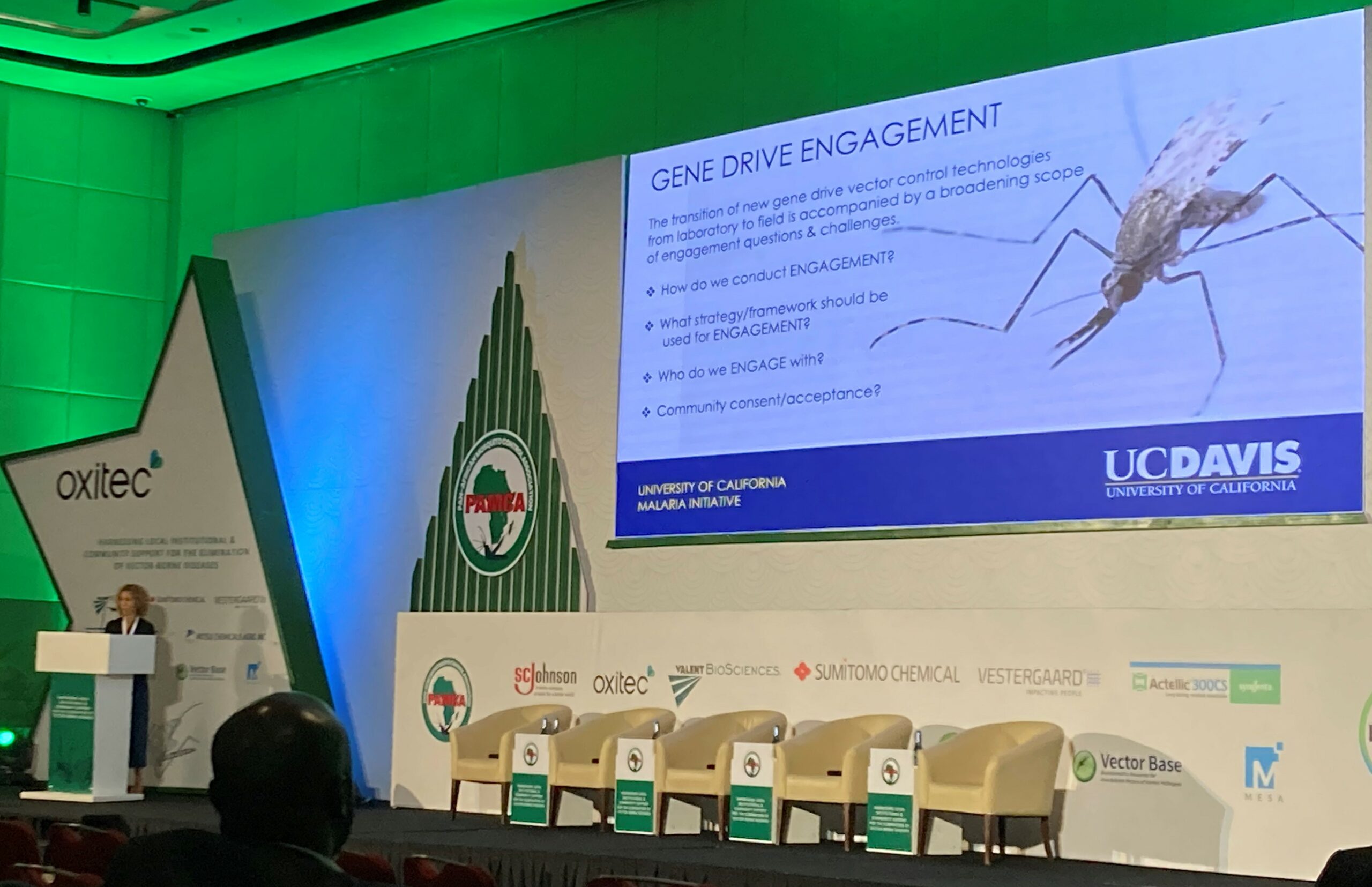
In 2016, the first genetically modified mosquitoes arrived in Burkina Faso in the hands of Lea Pare Toe (Research Institute of Health Sciences – IRSS, Burkina Faso) who received sterile and non-gene drive male mosquitoes from her partners at Target Malaria. The aim was to release the sterile mosquitoes into a community after a process of engagement with it. This engagement started six years ahead of receiving the mosquitoes and three years prior to its release in 2019. The engagement strategy was based on three principles: step-by-step progress, inclusive engagement and transparency in research. In conclusion, there is a need to better understand the pathway of the release of the mosquitoes as well as strong political support as backup and clear mapping of the stakeholders.
In addition, Naima Skyes (Target Malaria, UK) gave a picture of what stakeholder engagement might look like. Individual consent for community decisions is necessary and must be sought before and after mosquito release. She also emphasized flexibility, especially with dialogue and maintained that the community actors remain the centre of the research. The instauration of a direct communication approach that sidelines a middle man/third party is a way of building trust. Early engagement and updates were also crucial as the project develops. In conclusion, guidelines and frameworks recommended to an international level should always be adapted in a case-by-case community approach.
Parallel Symposium 3: Supporting improved insect resistance management strategies – a new mode of action for the Indoor Residual Spraying (IRS) programs
Chaired by Maezawa Takeo from Mitsui Chemicals Agro, Inc. and Dr. Graham Small from the Innovative Vector Control Consortium (IVCC).
Janneke Snetselaar (Innovative Vector Control Consortium – IVCC, UK), the first speaker, presented the importance of insecticide resistance management. Countries have reported mosquitoes being susceptible to more than one type of insecticide class. Insecticide resistance management (IRM) could reverse the insecticide resistance trends by rotating insecticides with different modes of action. Thus, there is a need for novel tools with different modes of action for effective IRM. The question raised, deciphers the feasibility of an IRM plan in a country. She ended her talk by introducing Vectron TM T500, a new insecticide under review by the World Health Organization (WHO).
Ayumi Kawasa (Mitsui Chemicals Agro Inc., Japan) introduced VectronTM T500, a novel broflanilide-based insecticide designed, for indoor residual spraying (IRS). It is a new generation of insecticide formulation containing new chemicals that provide improved and prolonged control of insecticide-resistant malaria vector populations. Trials conducted showed that the insecticide causes convulsions and death in mosquitoes. An. gambiae has shown to be more susceptible to this insecticide than other Anopheles species. The insecticide has a long residual activity, low mammalian toxicity, and is environmentally friendly. She mentioned that VectronTM T500 is a good candidate for IRM.
Samuel Dadzie (Noguchi Memorial Institute for Medical Research – NMIMR, Ghana) presented the results of a field trial assessing VectronTM T500 in Ghana. Testing was conducted through the exposure of wild-caught mosquitoes and Kisumu susceptible strain to treated mud and concrete walls, using WHO cone bioassays. VectronTM T500 performed similarly to SumishieldⓇ50WG, which was the reference product for IRS. Both insecticides achieved high mortality after 72 hours. However, VectronTM T500 had a prolonged efficacy compared to SumishieldⓇ50WG, which was the reference product. There was reduced efficacy on mud surfaces treated by VectronTM T500 than on concrete walls.
Steven Gowelo (University of Malawi, Malawi) presented the results of a field trial describing the efficacy and residual effect of VectronTM T500 on mud and brick wall surfaces. WHO wall cone bioassays were conducted in a southeastern district of Malawi using An. gambiae Kisumu strain. After seven months of trial, high mortality was recorded at 48 hours. VectronTM T500 and Fludora fusion performed similarly. The insecticide showed potential in controlling pyrethroid-resistant mosquitoes on all wall types.
Bayili Koama (Research Institute of Health Sciences – IRSS, Burkina Faso) presented results on the efficacy of VectronTM T500 on mud, concrete and cement walls. WHO wall cone bioassays were performed using field-caught and insectary-reared mosquitoes. The trial recorded high mortality from both field and susceptible strain for 12 months at 72 hours. The residual efficacy of the insecticide is longer than for the reference product, and it has higher efficacy on entomological parameters. No adverse effect was recorded from the use of VectronTM T500 and the product was accepted by users.
Parallel Symposium 4: The mosquito abatement district learning exchanges – Lessons from the American mosquito control model
The session was co-chaired by Elijah Juma (PAMCA) and Samuel Rund (University of Notre Dame, USA).
Elijah Juma (PAMCA) explained that the exchange of knowledge on mosquito abatement in certain districts in the United States, with some African countries, resulted in the implementation of similar strategies within the African context. The differences and similarities between the two programs were mentioned, the main ones being the model of funding, and districts having dedicated taxpayer-funded budgets for mosquito control.
Dereje Alemayehu (Alameda County Mosquito Abatement District, USA) presented a brief history of the mosquito districts in America and emphasized how one of the first mosquito control districts saw women coming together to fund and clear breeding sites within their district.
Ary Fraji (Salt Lake Mosquito Abatement District, USA), presented on the Salt Lake abatement district program. The main intervention was larviciding using different products, tools and equipment with a robust surveillance system.
A panel discussion with Dereje Alemayehu, Prosper Chaki (PAMCA), Ary Fraji, Mark Breidenbaugh (Northwest Mosquito and Vector Control District, USA), Charles Mwalimu (Vector Control, Tanzania) and Otubea Owusu Akrofi (National Malaria Control Programme, Ghana) ensued. The discussion highlighted the need for African countries to see vector control as a community-led approach and so have communities find ways to fund these interventions, not relying on external funding which tends to dictate what you can do or not do. In addition, WHO guidance restricts vector control interventions such as larviciding which has been shown to work, and was used in the model of the mosquito abatement districts. A change in WHO guidance will also allow countries to obtain funding from institutions like Global Fund and PMI for interventions such as larviciding.
This report is brought to you by the MESA Correspondents Nzungize Lambert, Eggrey Aisha Kambewa, Oyinkansola Fadiji and Jean Claude Ngirimana, with the support of the past correspondents Leslie Diane Nkahe, Mauro Pazmino Betancourth, Doumbe Belisse Patricia and Nathalie Amvongo-Adjia, and other volunteers Otubea Owusu Akrofi and Caroline Kiuru. Senior editorial support has been facilitated by Jessy Goupeyou-Youmsi and Idelphonse Bonaventure Ahogni.
Published: 28/09/2022
This report is brought to you by the MESA Correspondents Lambert Nzungize, Eggrey Aisha Kambewa, Oyinkansola Suliat Fadiji, Jean Claude Ngirimana, Diane Leslie Nkahe, Mauro Pazmino Betancourth, Patricia Doumbe Belisse, Nathalie Amvongo Adjia, Otubea Owusu Akrofi, and Caroline Kiuru. Senior editorial support has been facilitated by Jessy Goupeyou-Youmsi and Idelphonse Bonaventure Ahogni.
THEMES: Vector Control
